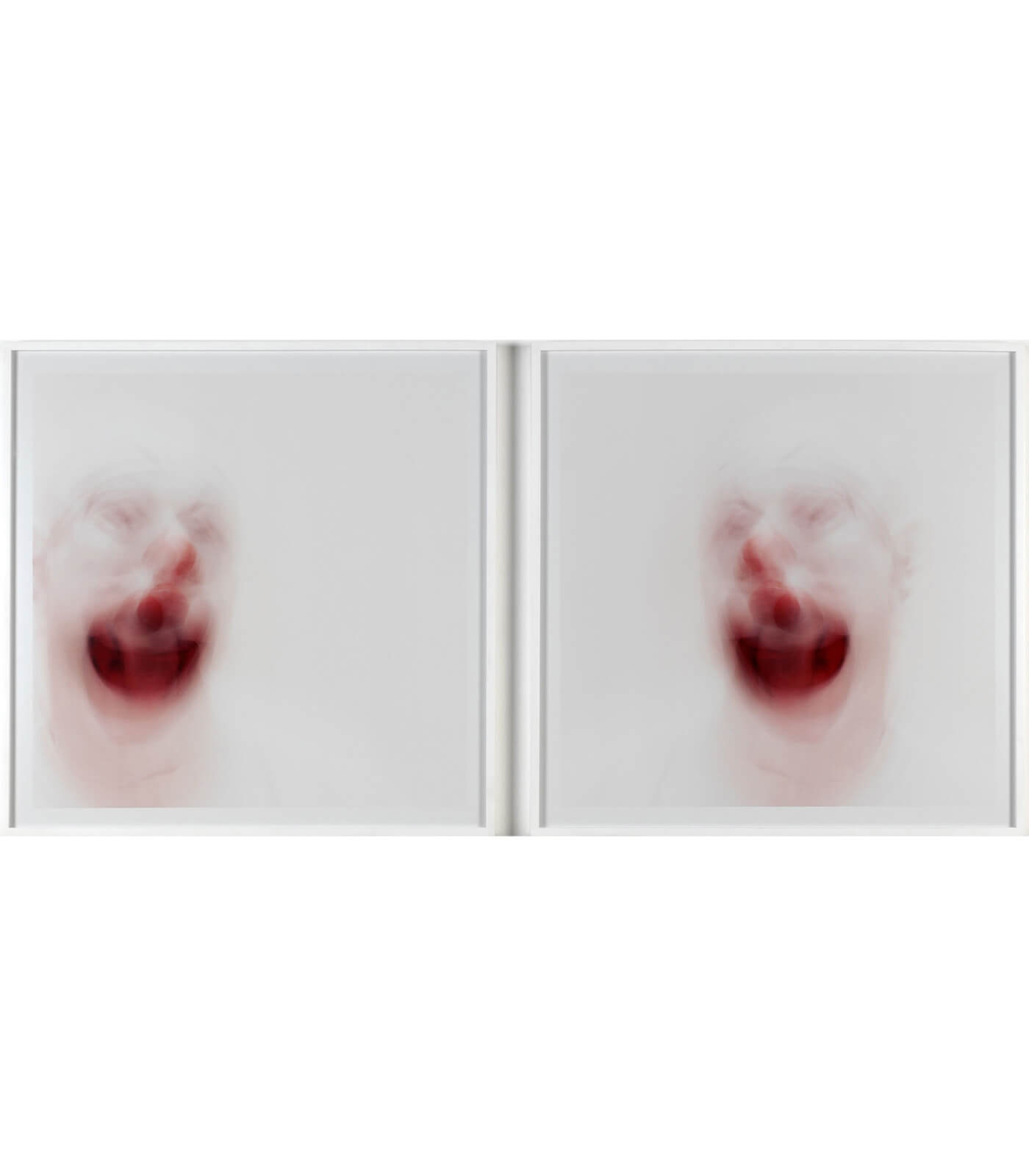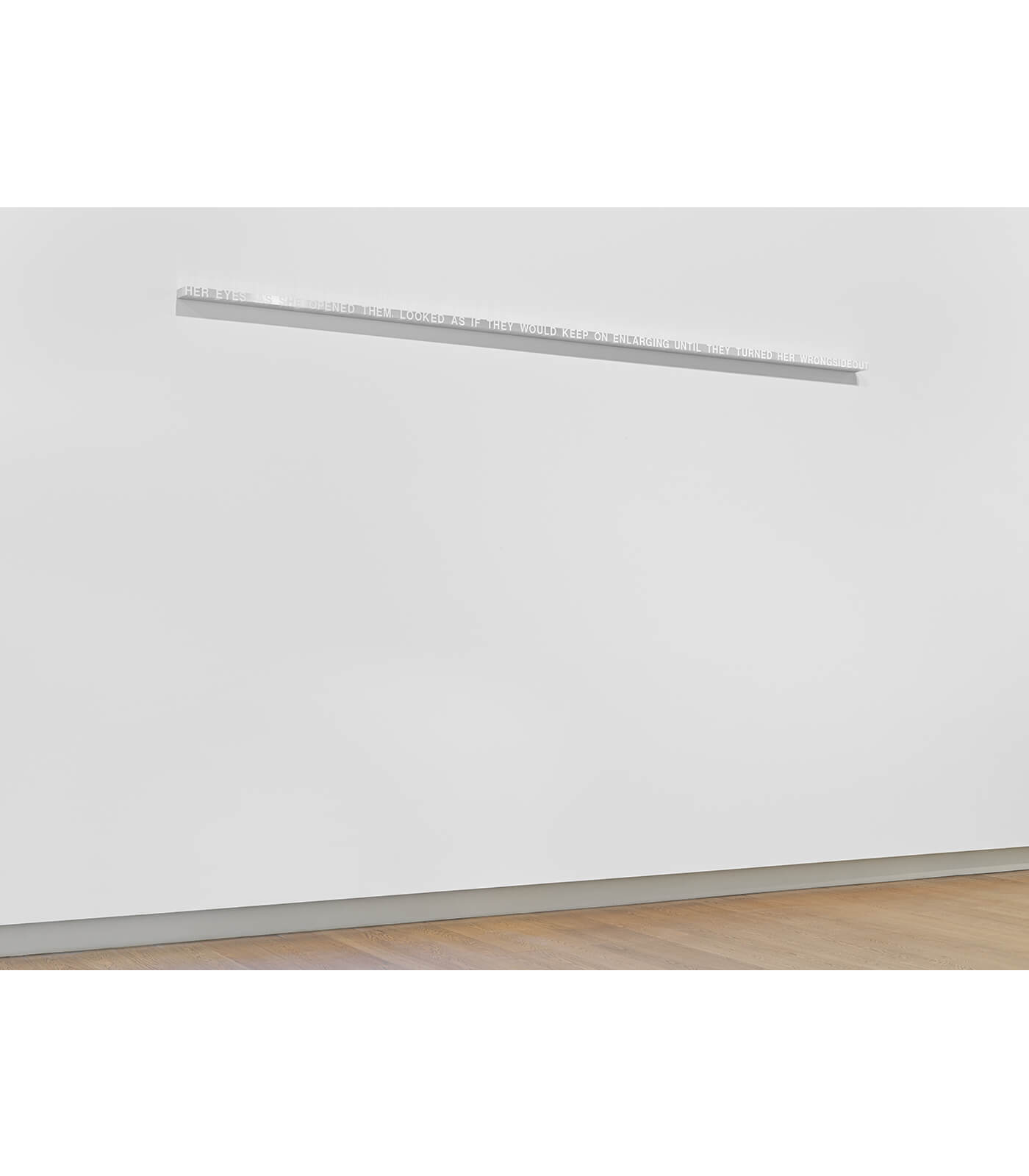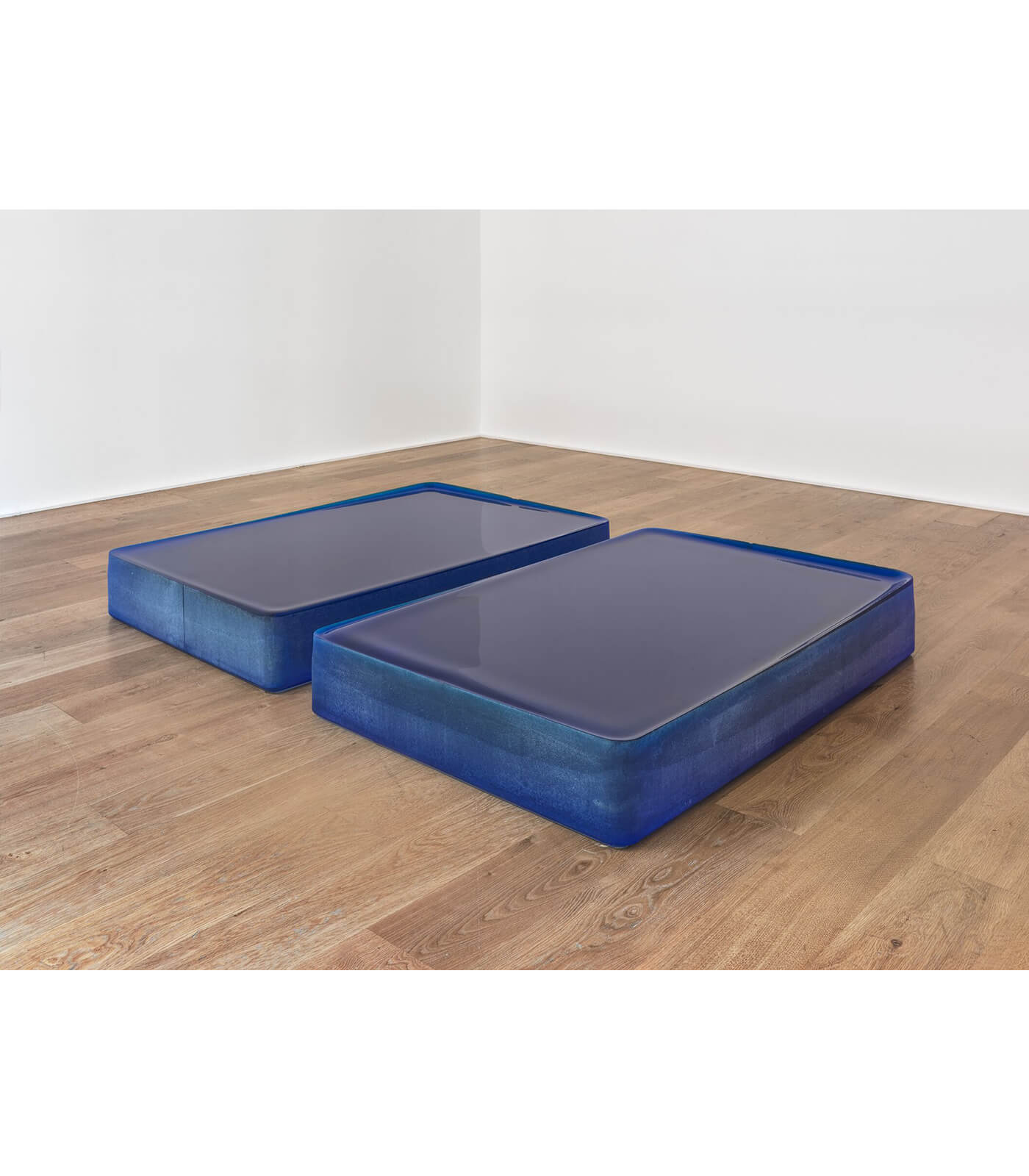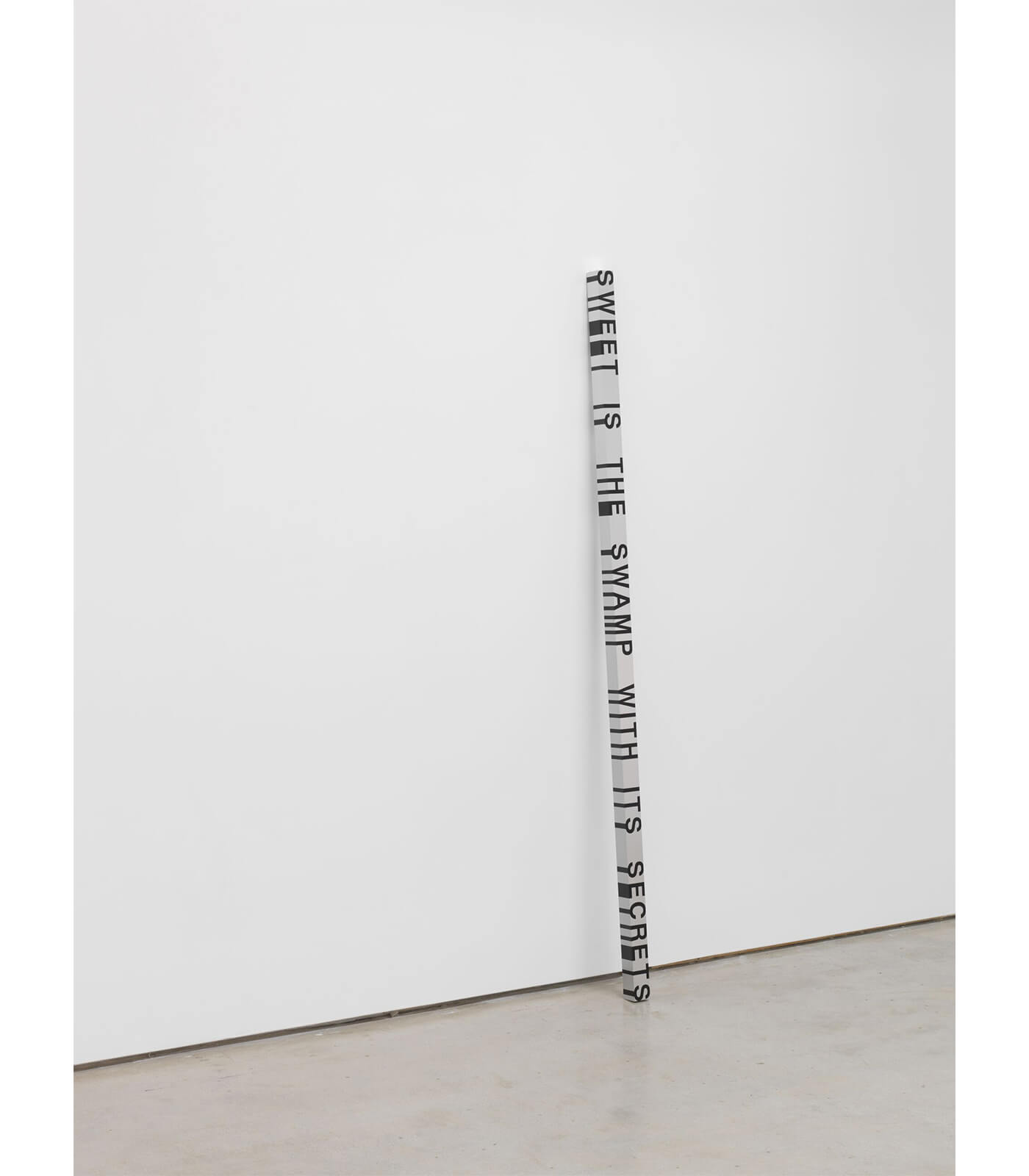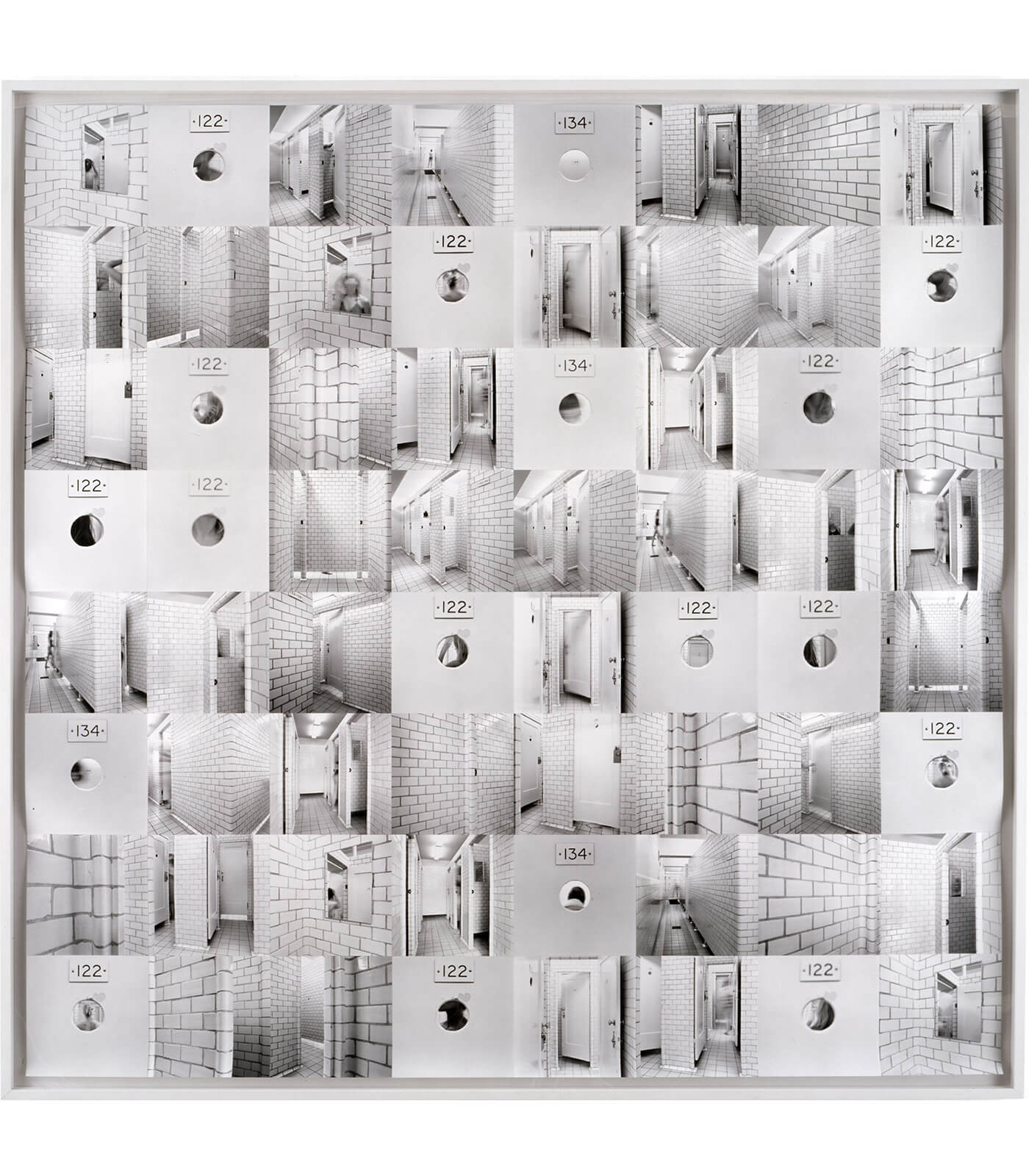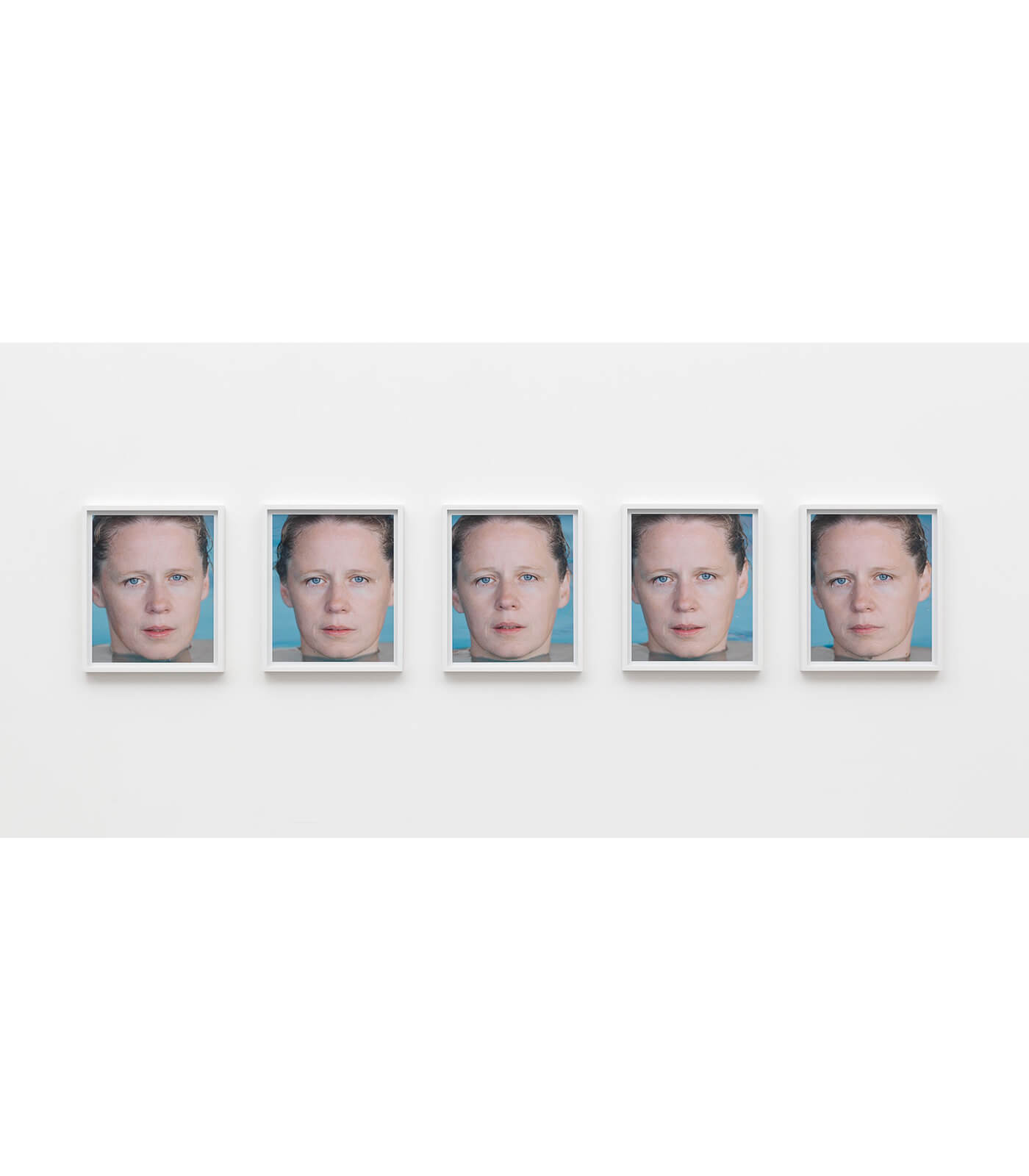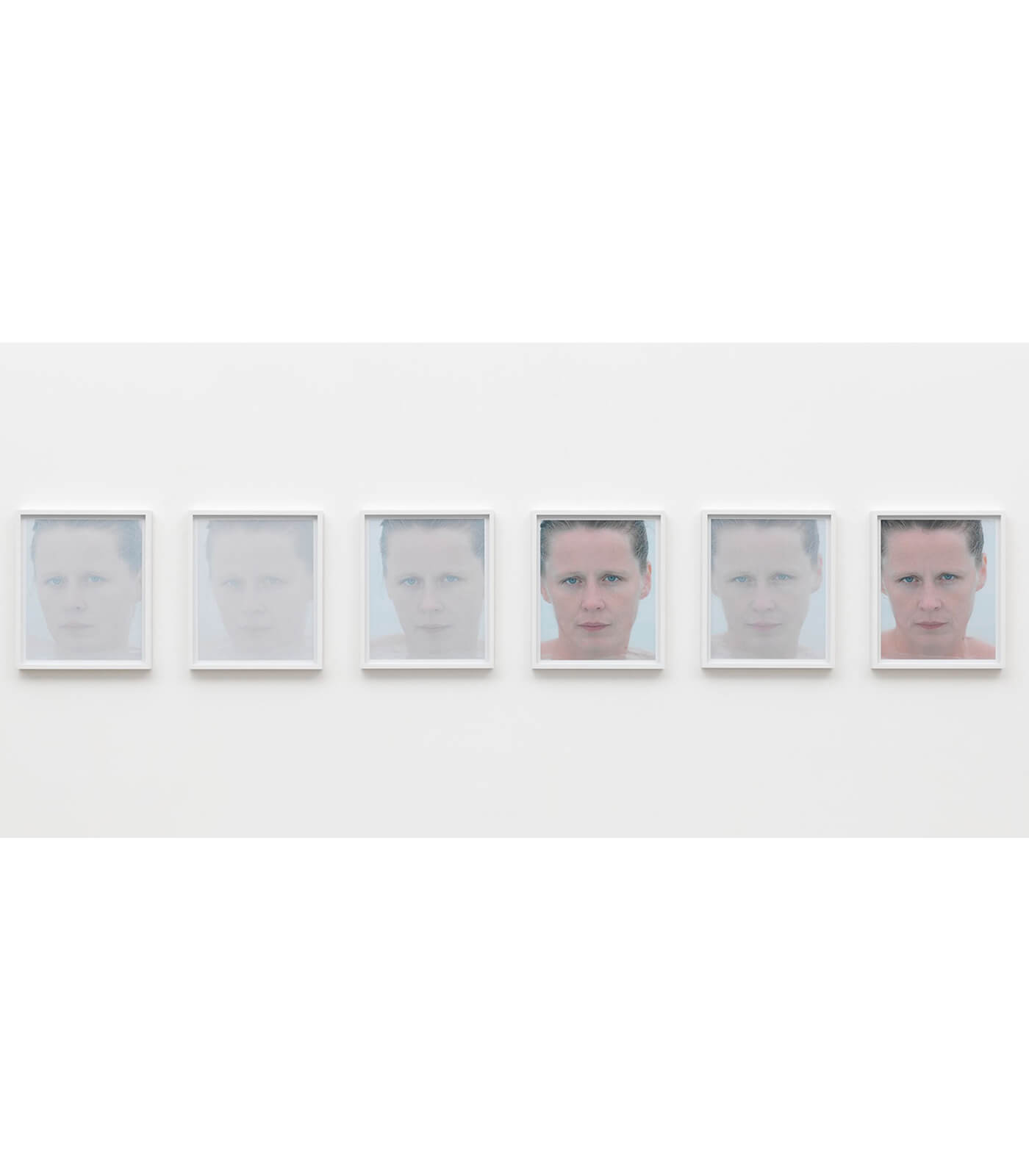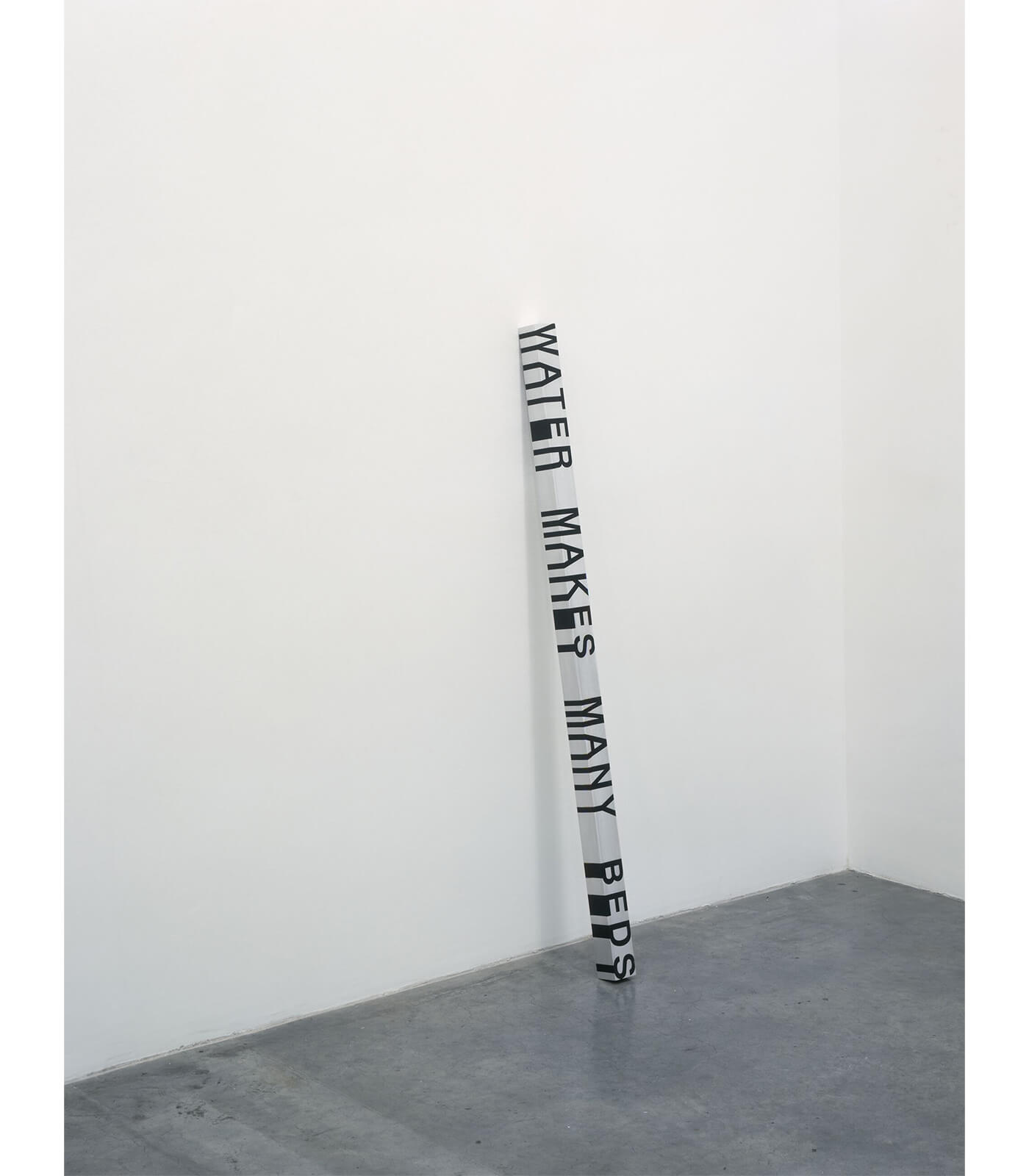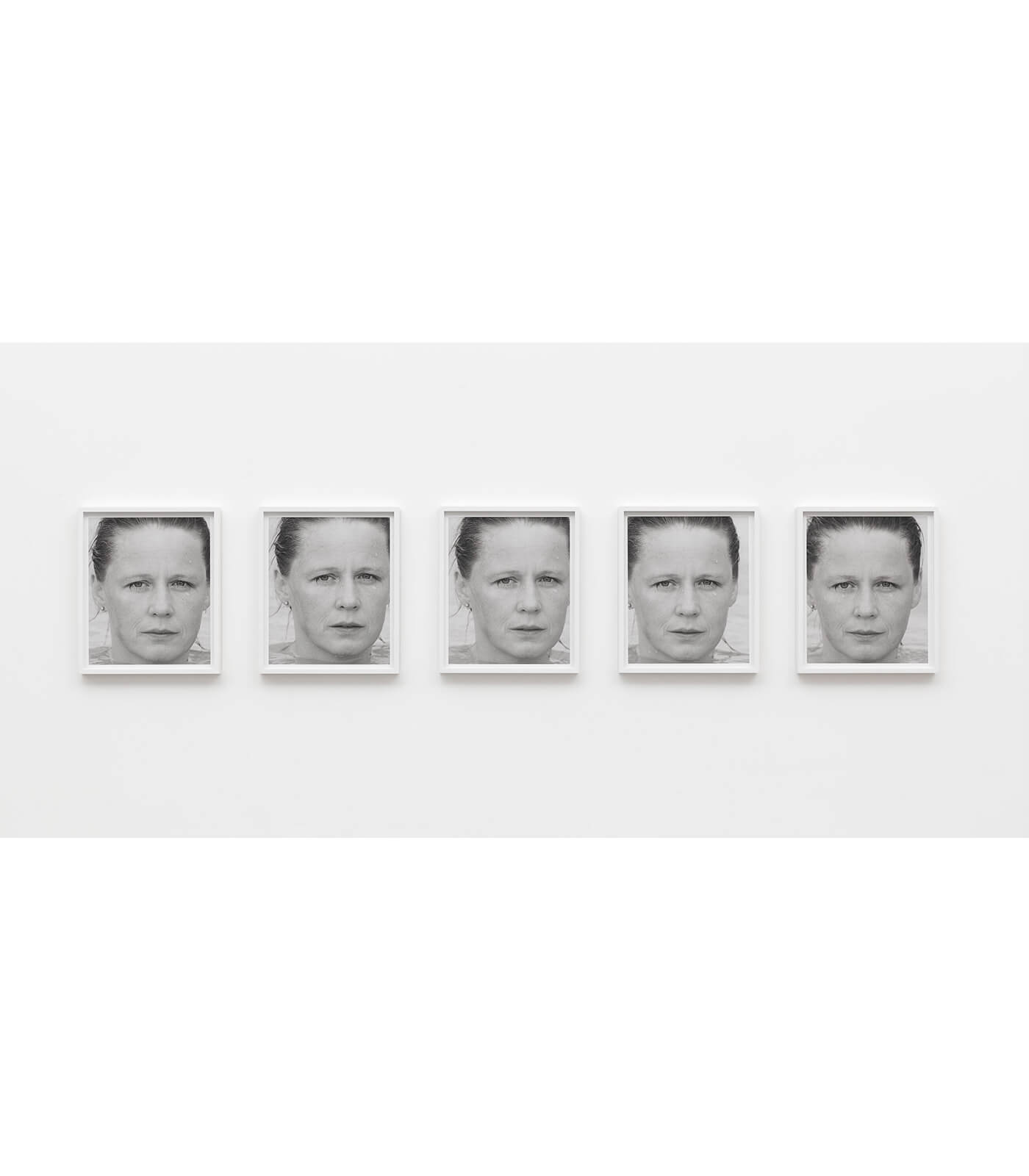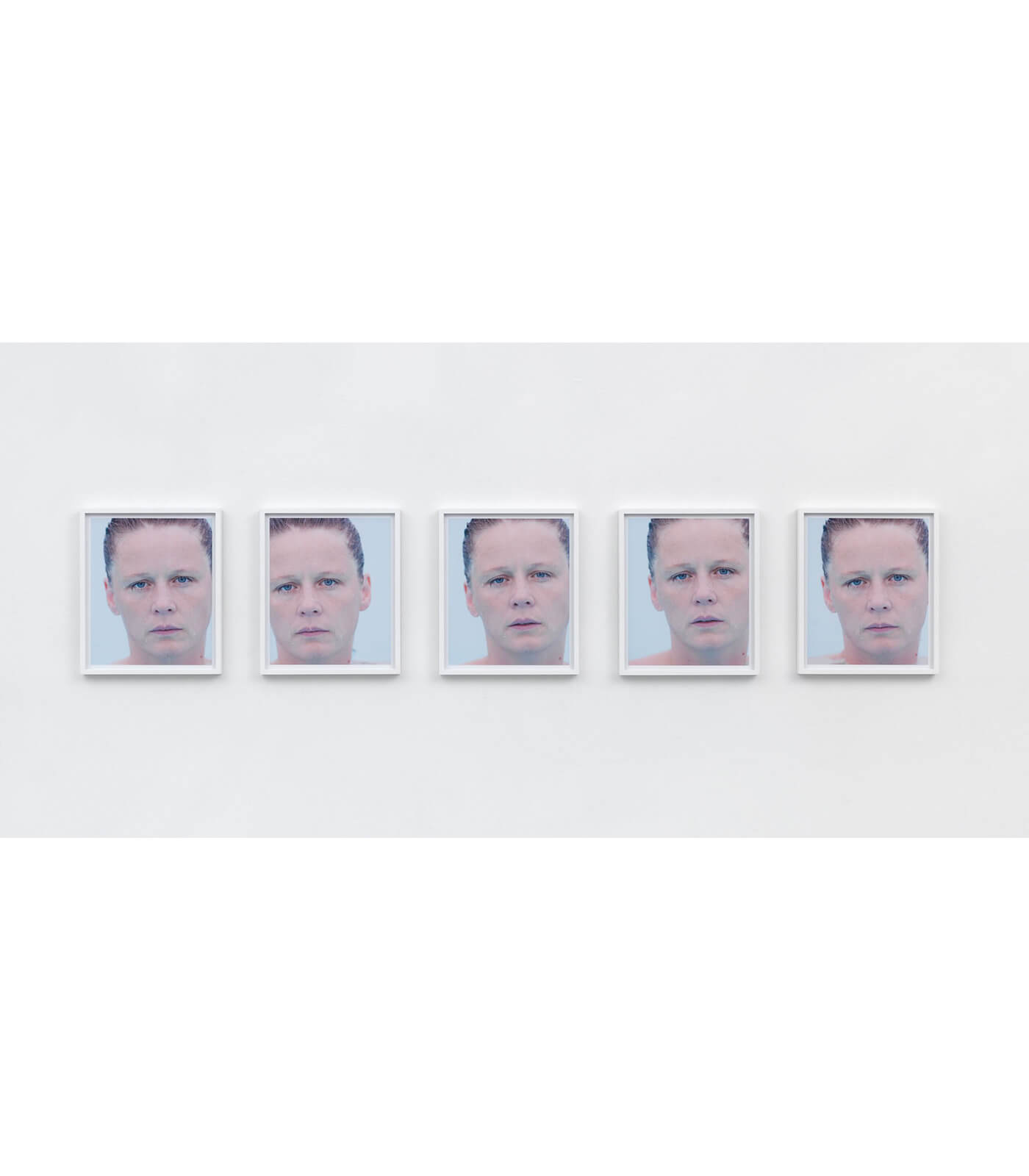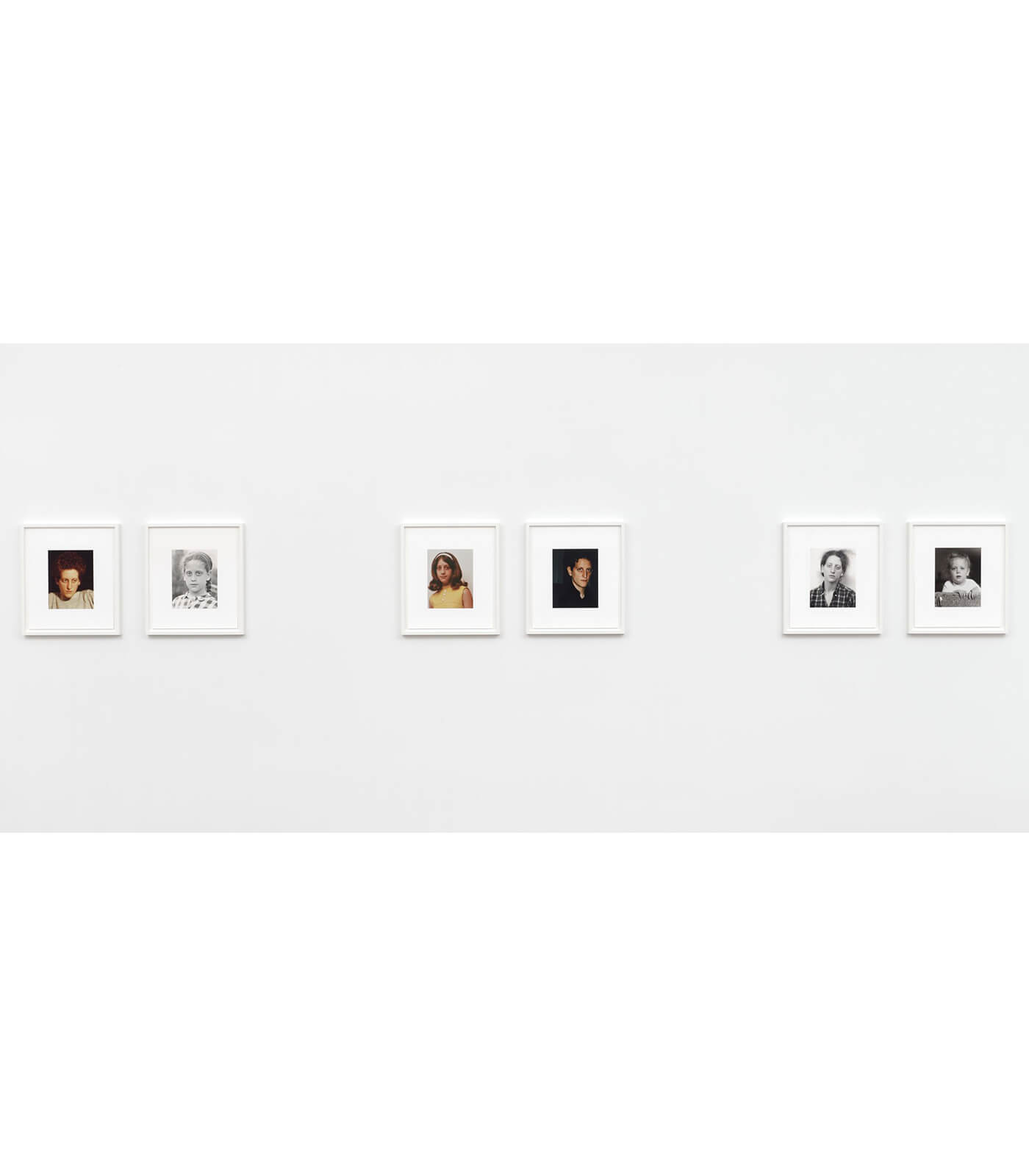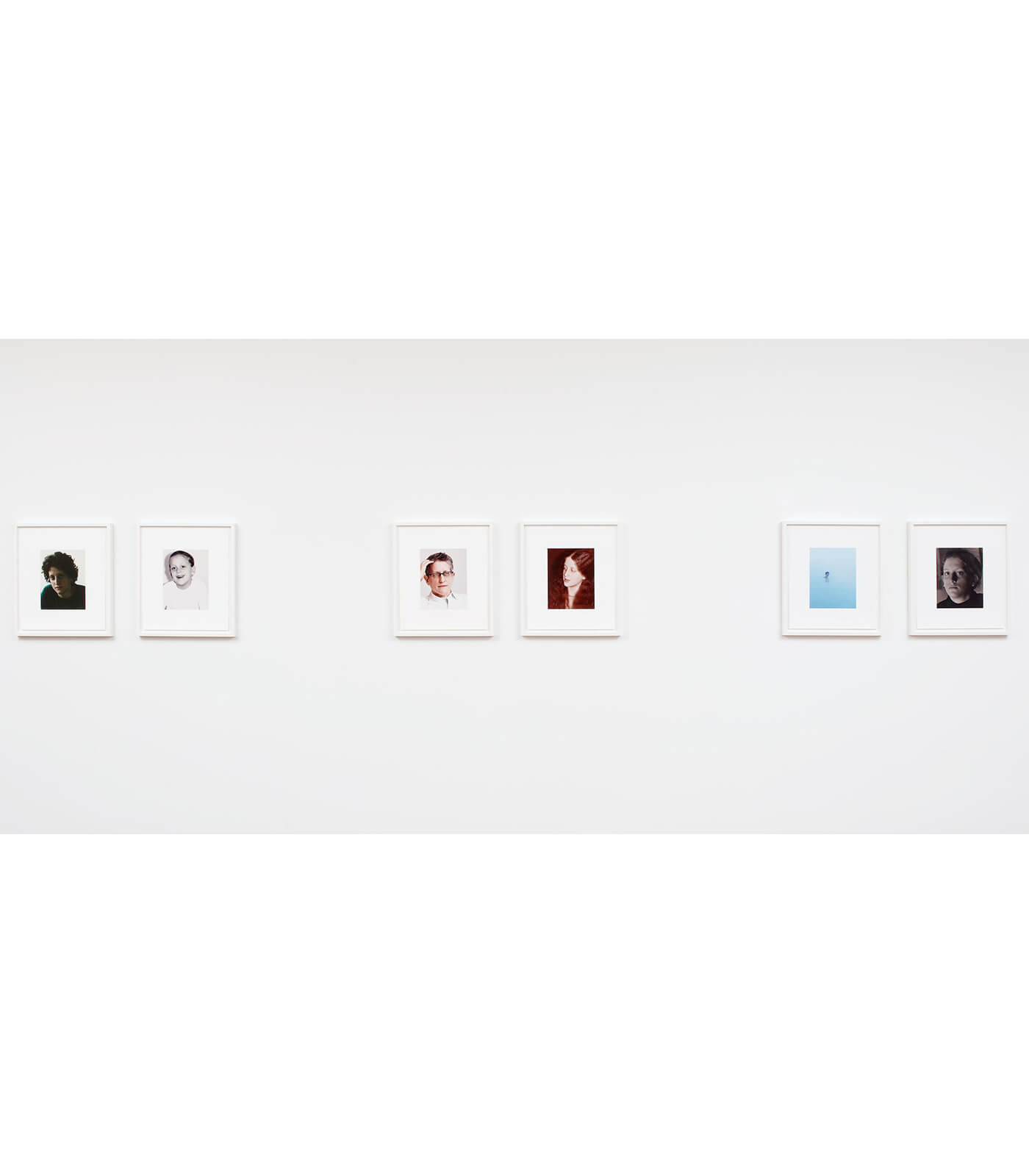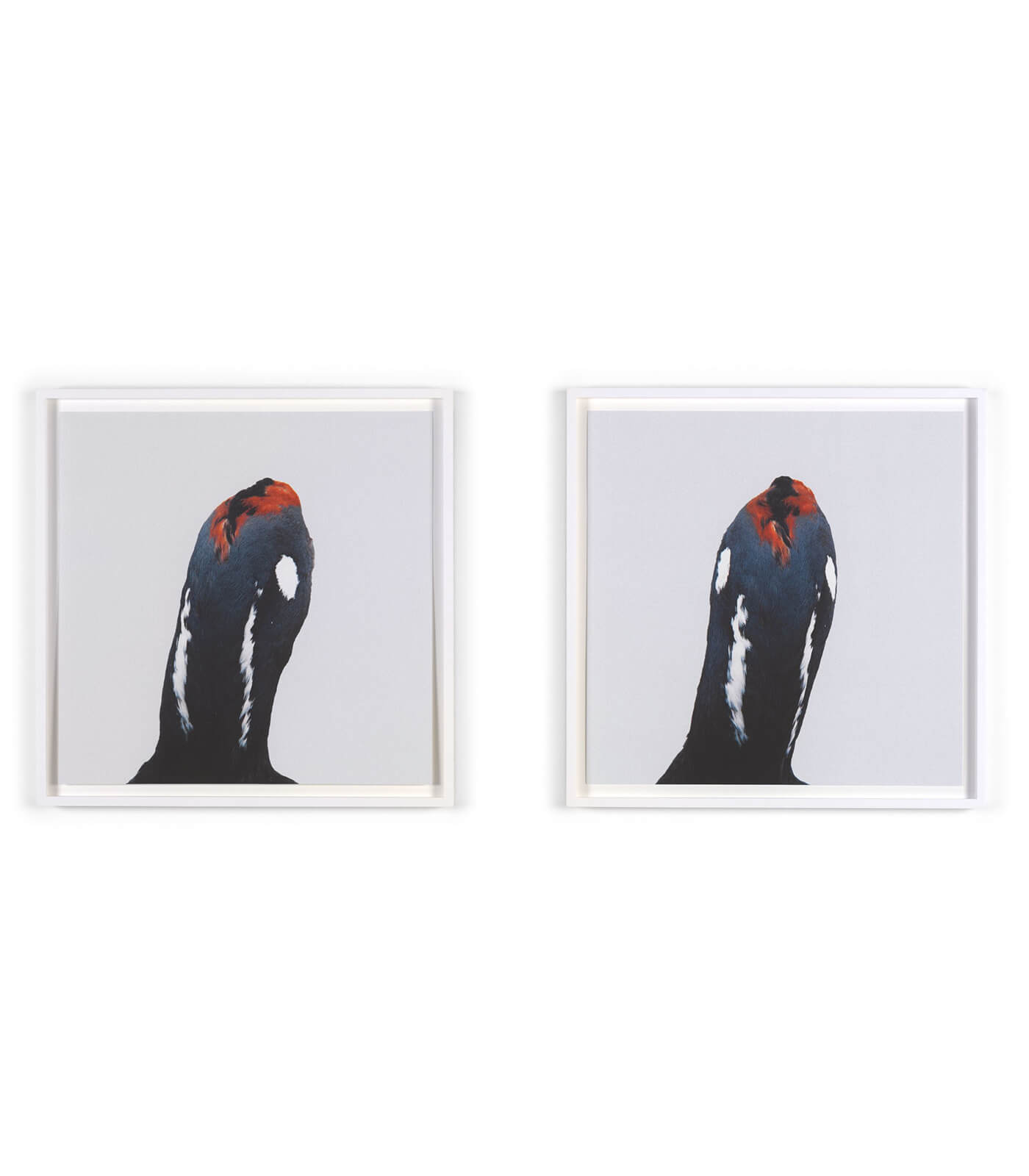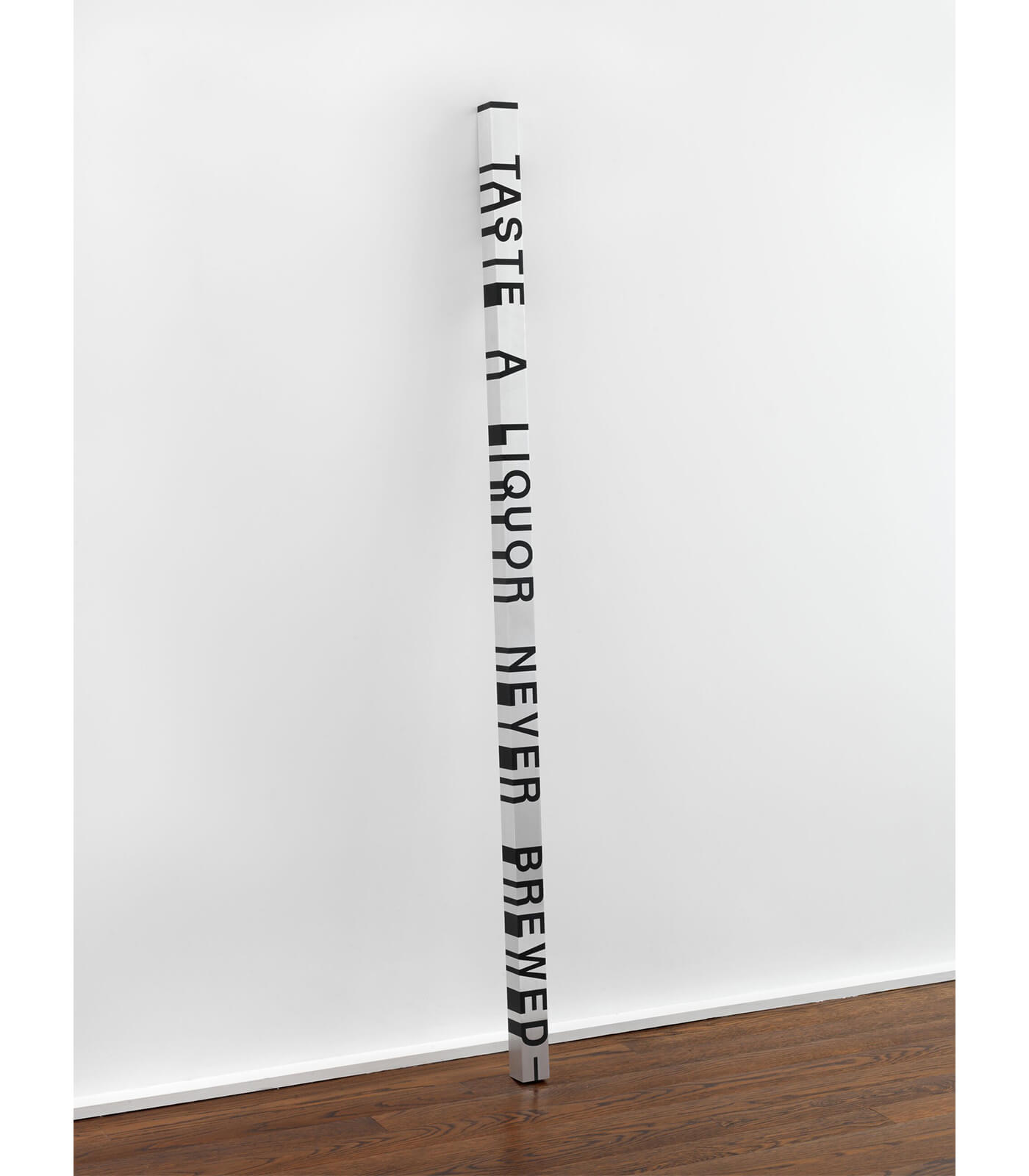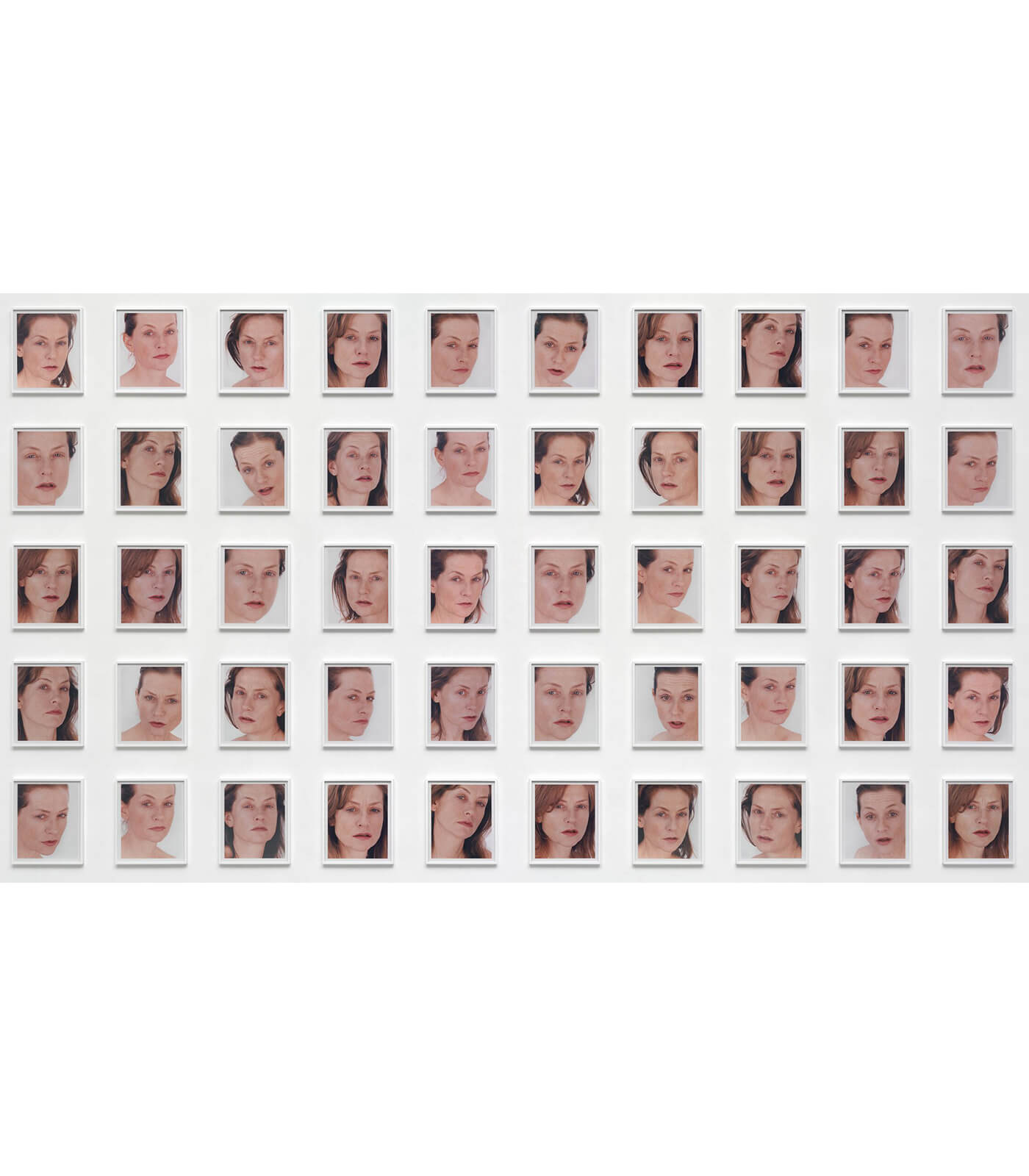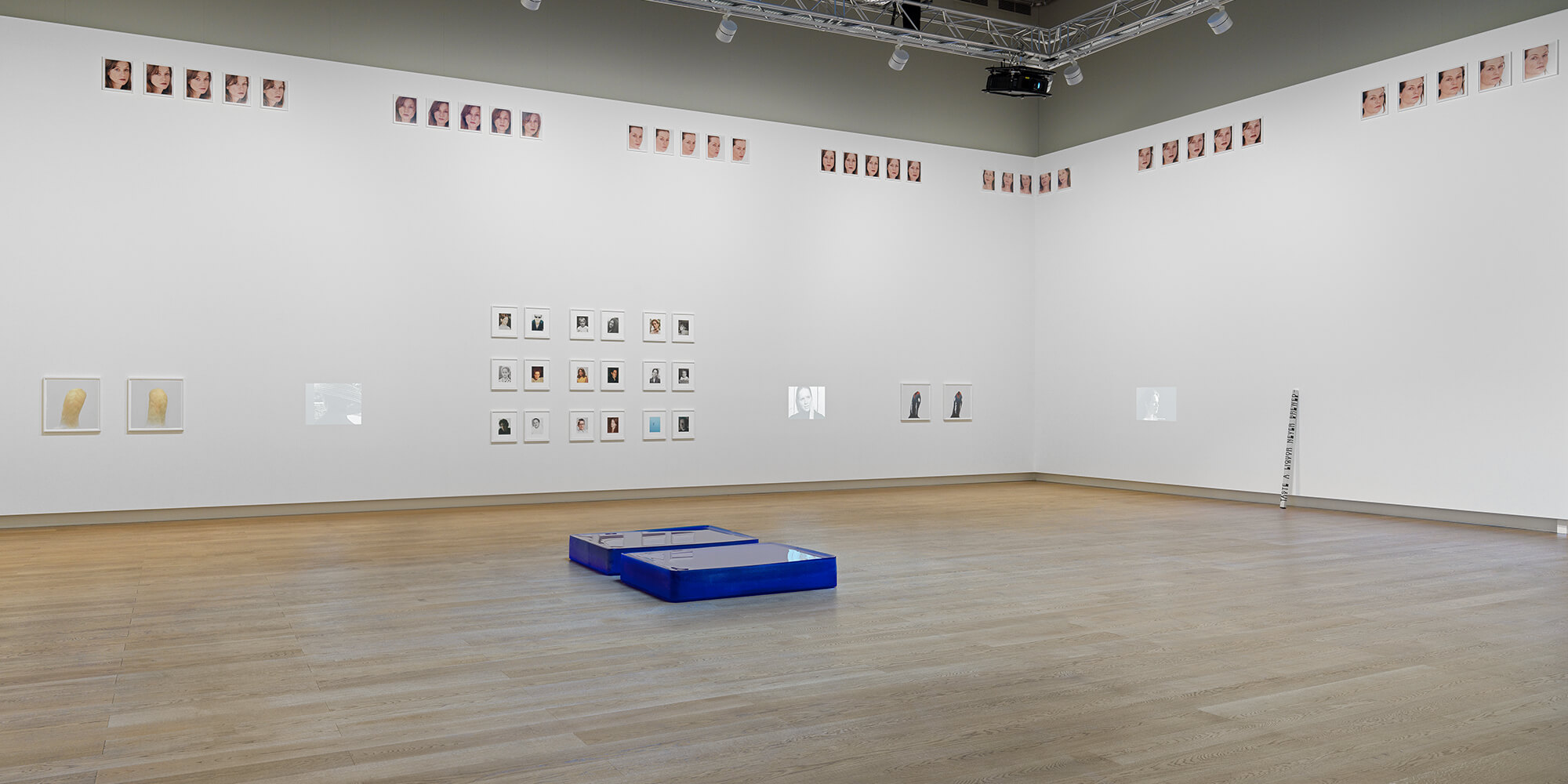
Roni Horn
‘SWEET IS THE SWAMP WITH ITS SECRETS’
23 September – 17 December 2022
Monaco
Now open in Monaco, this exhibition reads the work of Roni Horn through the prism of cinema for the first time, presenting the artist’s photography and sculpture alongside clips from Ingmar Bergman’s 1966 drama ‘Persona.’
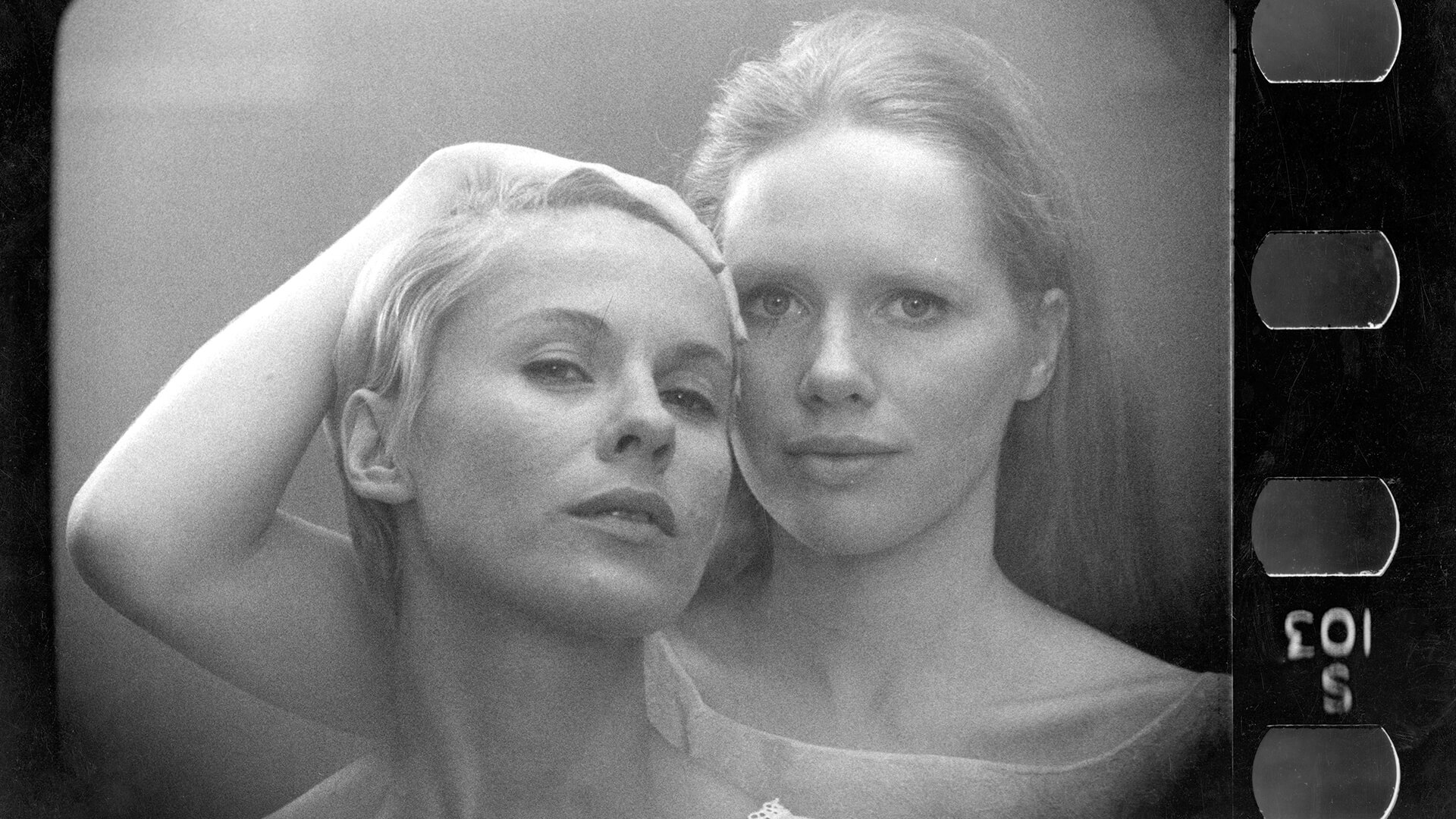
Explore the exhibition
This exhibition reads the work of Roni Horn through the prism of cinema for the first time. Horn’s photography and sculpture are presented alongside clips from Ingmar Bergman’s 1966 drama ‘Persona.’ This juxtaposition not only clarifies the profound influence of cinema on Horn’s work, both formally and conceptually, but also sheds light on its intense psychosexuality, which is often submerged under its conceptual rigor and empirical character.
‘I hear sounds from across the lake. Women crying—birds mating—a kind of hysteria I can’t quite name. The sound is familiar but wrong and the wrongness disturbs me. I’m listening, keyed to each successive moment. I’ve never heard this before; I’ve never heard anything quite like it before, high pitched, attenuated, almost screeching, going on intermittently, never quite beginning, never quite ending. I wonder, out here in the cold, I wonder in the night’s day and out here near the vastness of this lake: I hear this noise and am awed. This is the sound of ice, of ice against ice. I think of the sound of the peacocks and of the heavy hemlocks.’—Roni Horn, ‘WALLACE STEVENS’S ICE’
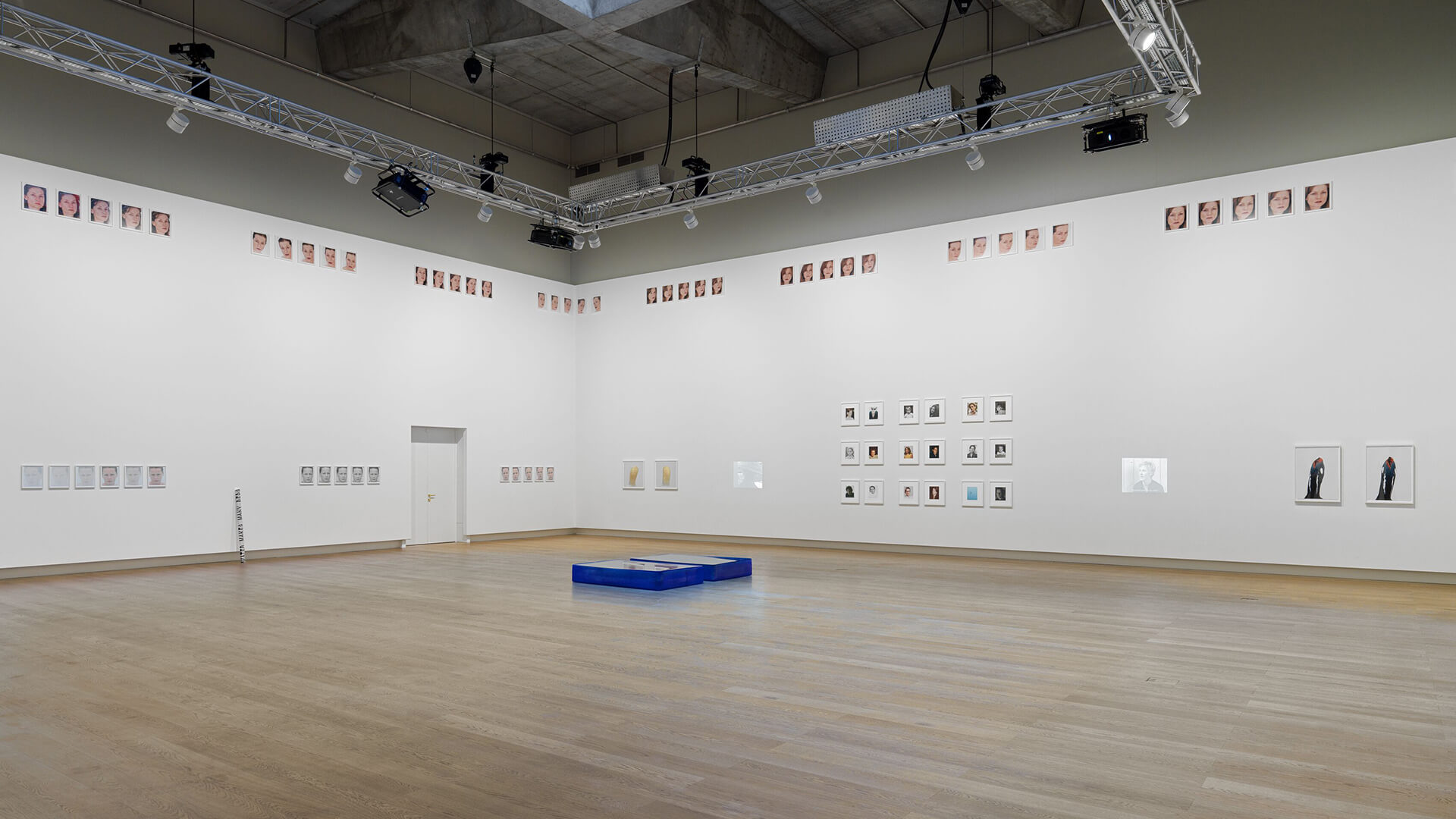
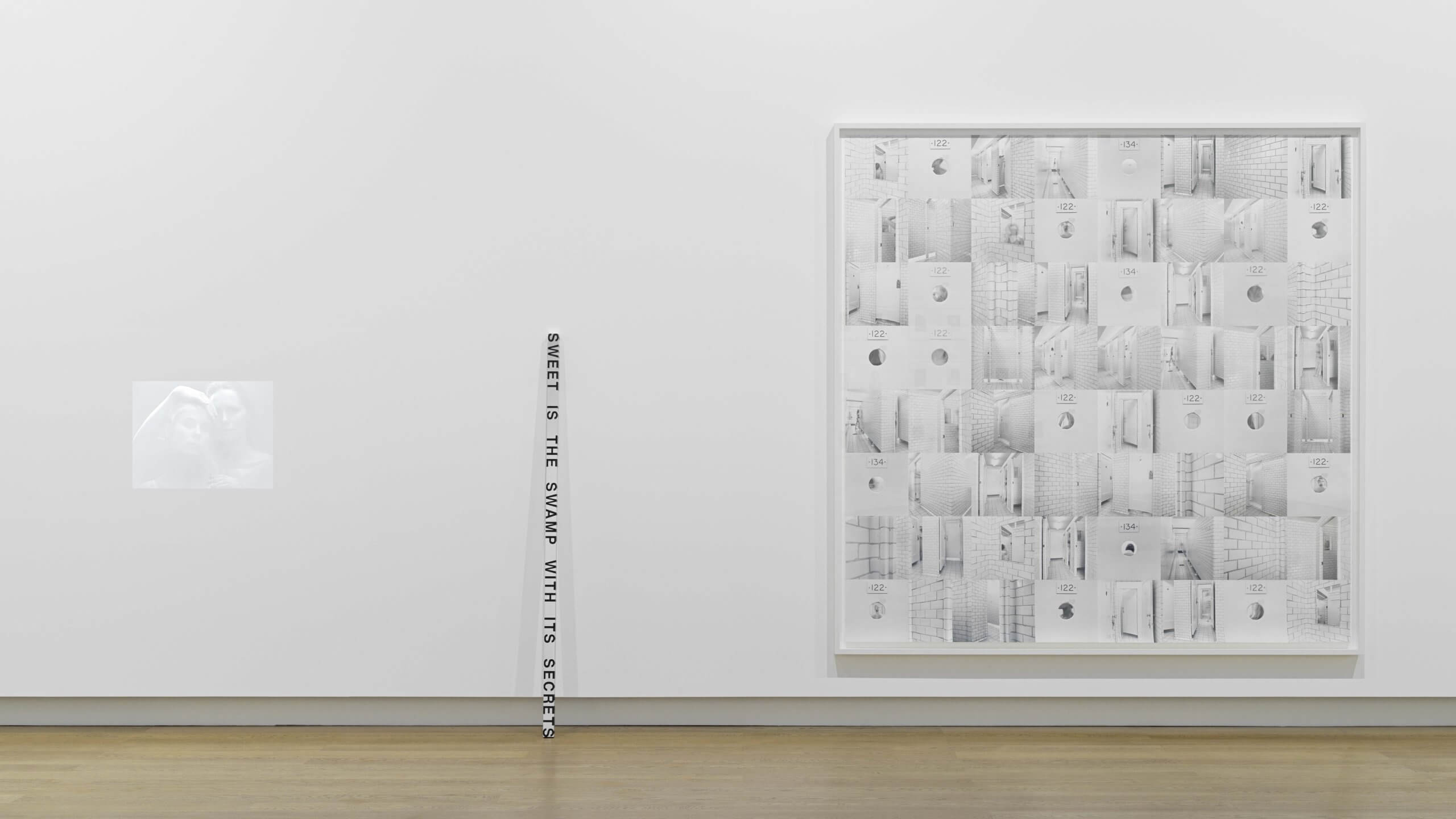
While words, literature, and language are often grasped as keys to Horn’s practice, this exhibition reveals that the body, desire and sexuality—the ‘secrets’ of the ‘swamp’—are equally crucial to the instability and mutability of identity, which is her main theme. ‘Roni Horn. ‘SWEET IS THE SWAMP WITH ITS SECRETS’’ is curated by Jerry Gorovoy for Hauser & Wirth Monaco. The title is taken from a poem by Emily Dickinson.
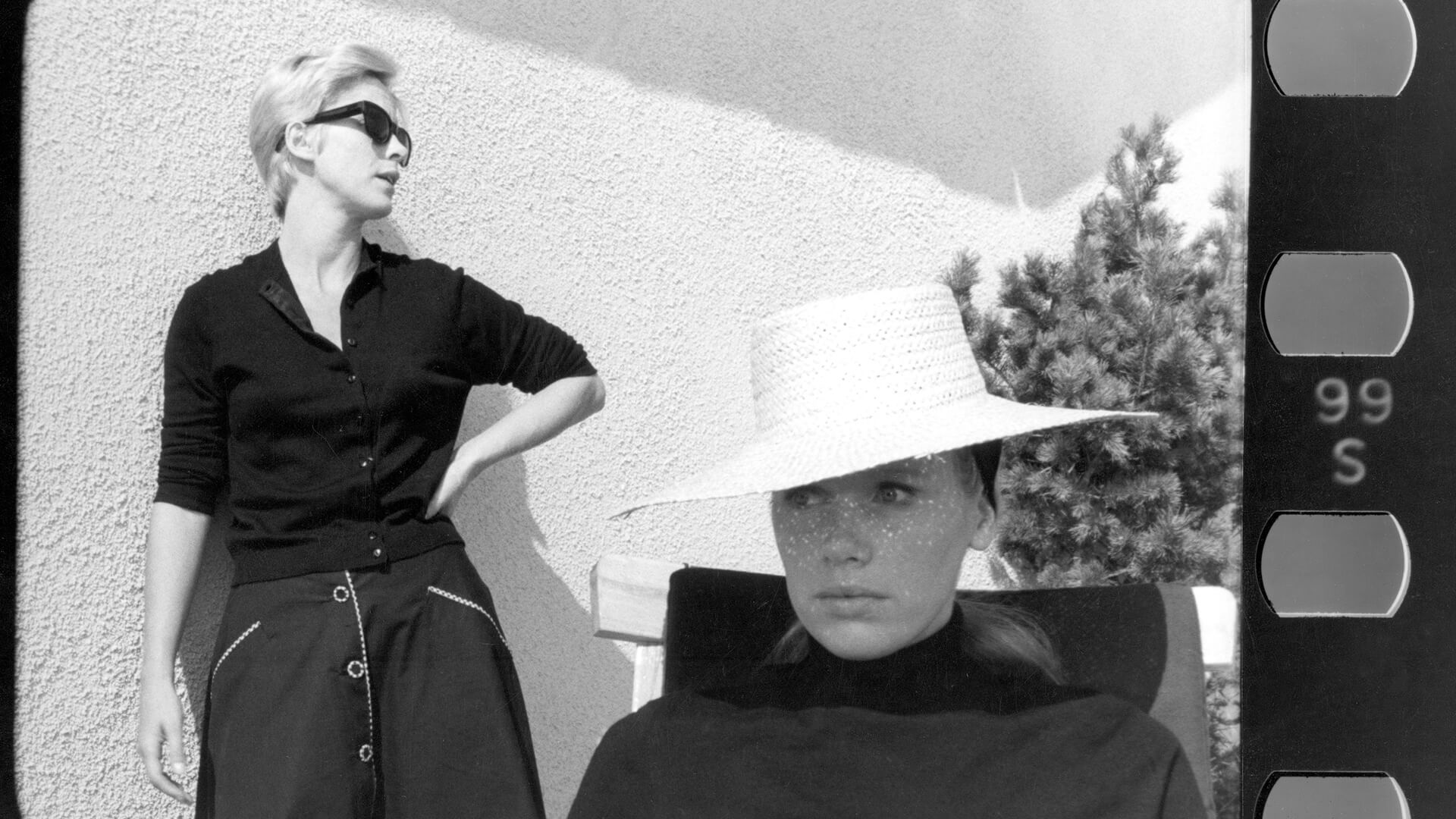
Like many of Roni Horn’s works, Bergman’s film centers on a paired form—the interaction between two women: Elisabet, an actress who for some unknown reason suddenly refuses to speak, and Alma, the nurse who is assigned to her care. While their ever-changing relationship defies a definitive narrative, Bergman presents visually and formally a peeling off of each character’s masks to reveal the deeper psychic conflicts that define who they really are.
‘I do understand, you know. The hopeless dream of being. Not doing, just being...And at the same time the abyss between what you are for others and what you are for yourself. The feeling of dizziness and the continual burning need to be unmasked...Every tone of voice a lie, an act of treason. Every gesture false. Every smile a grimace...Which has tortured you most? Playing the actress with the interesting face? Keeping all the pieces together with an iron hand and getting them to fit? Where did it break? Where did you fail?...And so you were left with your demand for truth and your disgust. Kill yourself? No—too nasty, not to be done. But you could be immobile. You can keep quiet. Then at least you’re not lying. You can cut yourself off, close yourself in. Then you don’t have to play a part, put on a face, make false gestures. Or so you think. But reality plays tricks on you. Your hiding place isn’t watertight enough. Life starts leaking in everywhere. And you’re forced to react. No one asks whether it's genuine or not, whether you’re true or false.’—Ingmar Bergman, ‘PERSONA’
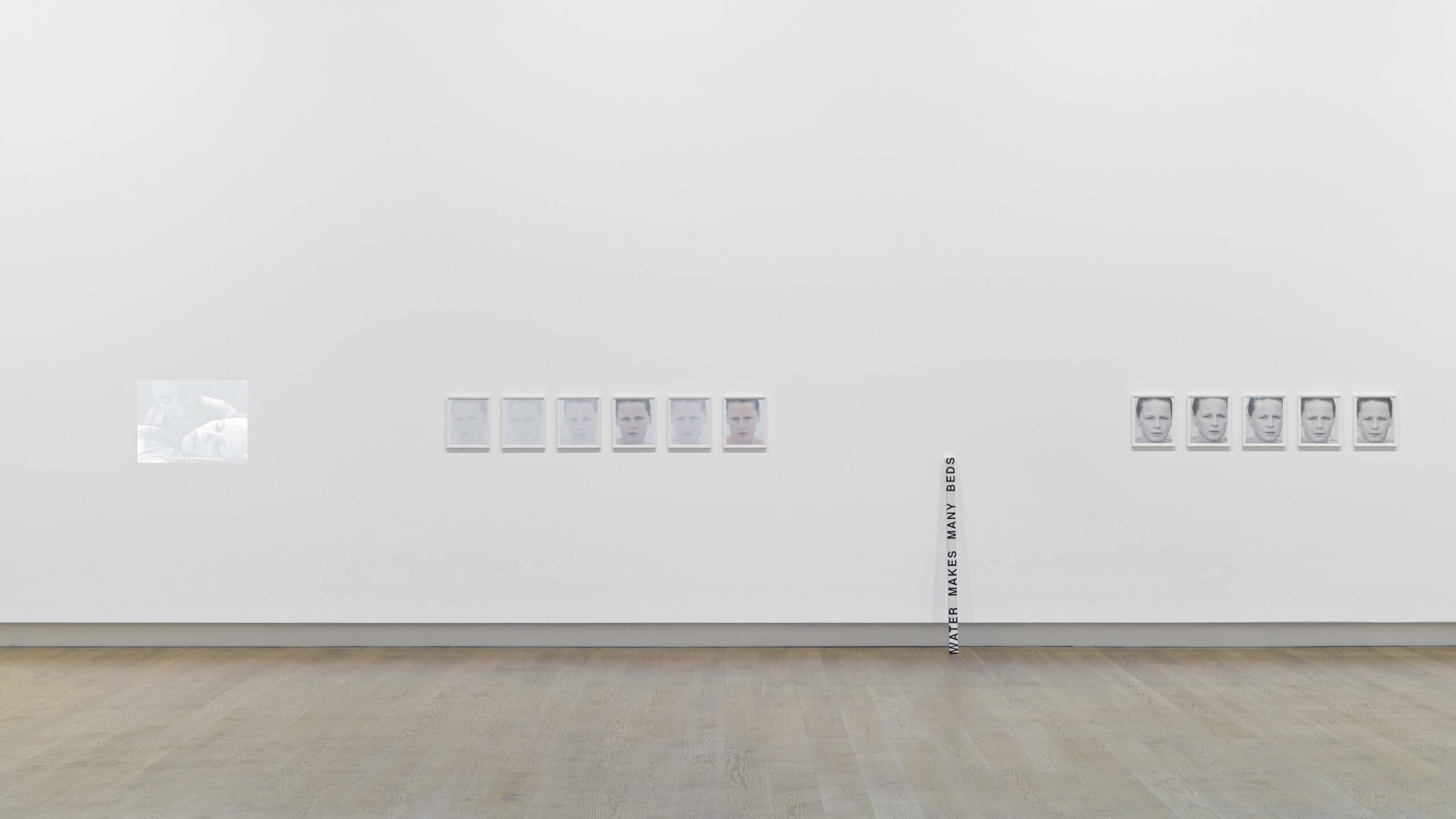
At times their interaction feels like a struggle of wills, at others like a reversal of roles, with the nurse increasingly performing for the actress and the actress quietly observing the nurse. There are moments where we feel like we are witnessing an erotic relationship with a sadomasochistic dimension. Are we watching two different people merging into one, or one person taking over the other’s identity, or even two sides of the same split personality?

Both Bergman and Horn reveal the tension between the external world, where the socially inscribed body reigns and the internal world of psychic reality, locus of the lived body with its drives and desires. Bergman exploits the formal devices of the medium of film to mimic the mechanisms of psychic life: dramatic contrast of light and dark, repetition of identical and near-identical images, camera angles, close-ups, cutting and splicing.
‘Now I see you. You’re sitting on the bed, back against the wall, legs apart. I’m kneeling between them and you say to me: that was sweet, that was so sweet.’—Roni Horn, ‘CROSSING A FIELD I REMEMBER’
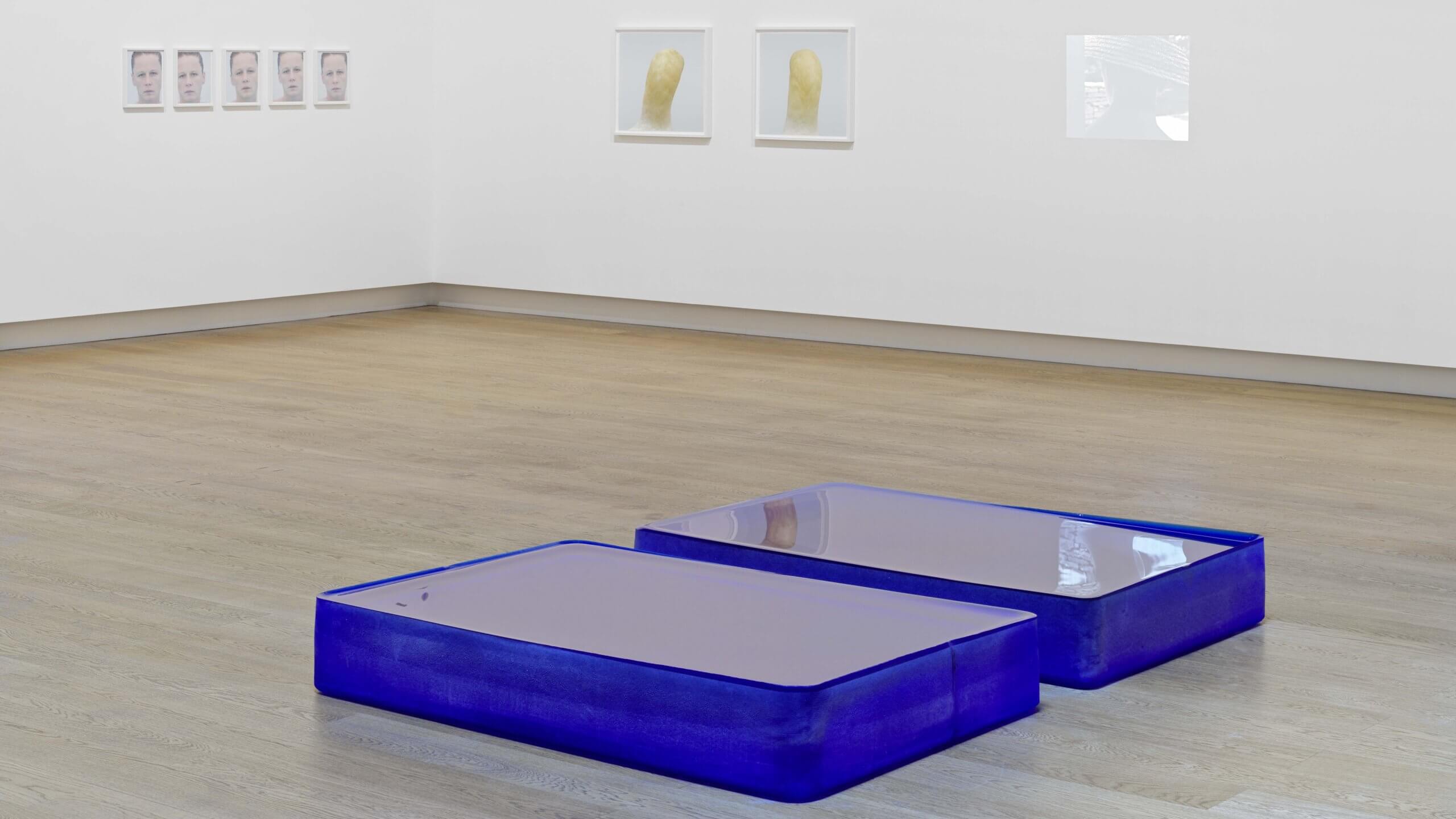
Horn’s writings from Iceland attest to the projection of the libidinal energy onto the landscape. Employing cinematic techniques in her drawings and photographic suites, Horn has developed a syntax of forms whereby her erotic imagination—real and fantasized, conscious and unconscious—coalesces into a unique cosmology. Concrete manifestations of Horn’s sublimated sexuality: The hot springs and pools that double as eyes and orifices, the phallic quality of her stuffed birds photographed from behind, the gridded peep hole views of the girl’s locker room in ‘Her, Her, Her and Her’ (2002 – 2003), the serial images of Margret sweating in the thermal waters.
The clown in ‘Cabinet of’ (2001 – 2002) with its smeared red nose and lips can be read a symbol of sexual arousal, while revealing the relationship between identity, mask and performance. ‘a.k.a.’ (2008 – 2009), a series of self-portraits, charts Horn’s exploration of her androgyny to reveal the relationship between gender and performance and, like Bergman, the multiplicity and fluidity of identity.

On view in Monaco
The gallery is open Tue – Sat, 10 am – 6 pm. Please visit our location page to plan your visit.
About the Artist

Roni Horn
Roni Horn’s work consistently generates uncertainty to thwart closure in her work. Important across her oeuvre is her longstanding interest to the protean nature of identity, meaning, and perception, as well as the notion of doubling; issues which continue to propel Horn’s practice.
Since the mid-1990s, Horn has been producing cast-glass sculptures. For these works, colored molten glass assumes the shape and qualities of a mold as it gradually anneals over several months. The sides and bottom of the resulting sculpture are left with the rough translucent impression of the mold in which it was cast. By stark contrast, the top surface is fire-polished and slightly bows like liquid under tension. The seductively glossy surface invites the viewer to gaze into the optically pristine interior of the sculpture, as if looking down on a body of water through an aqueous oculus. Exposed to the reflections from the sun or to the shadows of an overcast day, Horn’s glass sculpture relies upon natural elements like the weather to manifest her binary experimentations in color, weight and lightness, solidity and fluidity. The endless subtle shifts in the work’s appearance place it in an eternal state of mutability, as it refuses a fixed visual identity. Begetting solidity and singularity, the changing appearance of her sculptures is where one discovers meaning and connects her work to the concept of identity.
For Horn, drawing is a primary activity that underpins her wider practice. Her intricate works on paper examine recurring themes of interpretation, mirroring and textual play, which coalesce to explore the materiality of color and the sculptural potential of drawing. Horn’s preoccupation with language also permeates these works; her scattered words read as a stream of consciousness spiralling across the paper. In her ‘Hack Wit’ series, Horn reconfigures idiomatic turns of phrase and proverbs to engender nonsensical, jumbled expressions. The themes of pairing and mirroring emerge as she intertwines not only the phrases themselves but also the paper they are inscribed on, so that her process reflects the content of the drawings. Words are her images and she paints them expressionistically, which—combined with her method—causes letters to appear indeterminate, as if they are being viewed underwater.
Notions of identity and mutability are also explored within Horn’s photography, which tends to consist of multiple pieces and installed as a surround which unfolds within the gallery space. Examples include her series ‘The Selected Gifts, (1974 - 2015),’ photographed with a deceptively affectless approach that belies sentimental value. Here, Horn’s collected treasures float against pristine white backdrops in the artist’s signature serial style, telling a story of the self as mediated through both objects and others—what the artist calls ‘a vicarious self-portrait.’ This series, alongside her other photographic projects, build upon her explorations into the effects of multiplicity on perception and memory, and the implications of repetition and doubling, which remain central to her work.
Inquire about available works by Roni Horn
On view now through 17 December 2022 at Hauser & Wirth Monaco.
Related Content
Current Exhibitions
1 / 12
